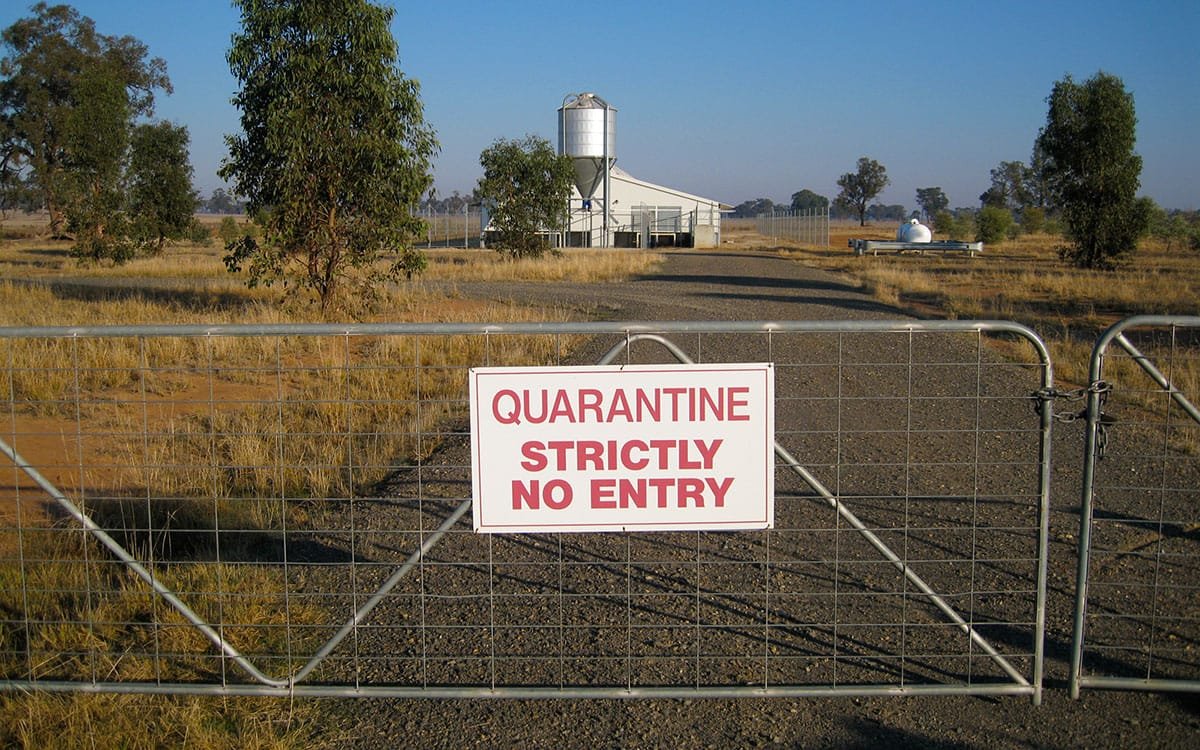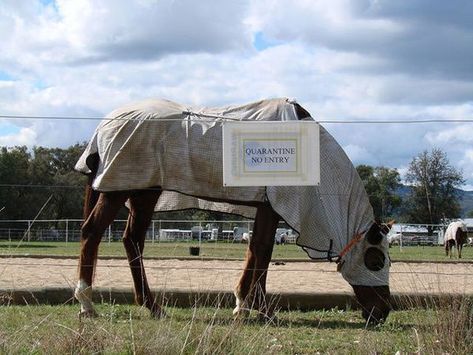By-
Amit Singh Vishen, K.N. Singh and Mukesh Kumar
Department of Veterinary Anatomy, College of Veterinary and Animal Science, Acharya Narendra Dev University of Agriculture & Technology, Ayodhya, Pinccode- 224229
The term quarantine means keeping in isolation animals which are to be introduced in a herd or territory for a definite period of time as a preventive measure against the spread of infectious diseases in a healthy population. The term quarantine comes from a Latin word, “quarantum” that means “forty”; that is to say a forty days period of detention. There is a hair line of difference between the quarantine and isolation is that in quarantine we separate and restrict the movement of healthy animals which may have been exposed to a communicable disease to see if they become ill but in isolation we separate ill having communicable disease from those who are healthy.
The quarantine period is usually equal to the longest incubation period of a disease. But in practice, a quarantine period of 30 days covers almost all diseases.
For List A diseases like Contagious Bovine Pleuropneumonia (CBPP), Rinderpest (RP) and African Swine Fever, the quarantine period is 6 months, 21 days and 40 days, respectively.
For List B diseases like Rabies, Infectious Bovine Rhinotracheitis (IBR), Haemorrhagic Septicaemia and Fowl Typhoid is 6 months, 30 days, 21 days and 28 days, respectively.
 Points to be required during detention of animals:
Points to be required during detention of animals:
1.) The enforcement for detention to be made based on International laws for the animals transported by sea, land or air from countries where Infectious disease is prevalent or suspected.
2.) The period of such isolation should be based on the Incubation period of the disease thus suspected.
3.) There should be proper arrangement for veterinary inspector to inspect the isolated animals.
4.) If possible, the animal should be kept in isolation box.
5.) There should be prohibition for entry and departure of the animal from the isolation room.
6.) During isolation, animals should be thoroughly screened for parasitic infestation by faecal examination and deworming carried out on the 23rd or 24th day, if need be. The animals should also be subjected to dipping or spraying on the 25th or 26th day for removing ectoparasites if any.
Acts and IPC section related to Quarantine:
1) ‘Livestock Importation Amendment Act’, 1953
2) ‘Import and Export Central Act’, 1947
3) ‘Livestock and Livestock Products Importation Act’, (Amended, 2001)
4) IPC (Indian Penal Code) 1860, Section 271, Disobedience to Quarantine rule.
Spread of Exotic diseases:
In the past due to nonenforcement of strict quarantine and surveillance measure many exotic animal pathogens could gain entry in our country. Thus, the country had to suffer a lot in terms of livestock production. In April, 1960, African Horse Sickness flared up as a devastating outbreak for the first time causing colossal loss of equine population. This was due to the transportation of some infected horses from Pakistan regions. In 1961, a Swine Fever was noted in Goa regions when pigs were sold in Mumbai so spread the disease over there. Some important diseases which have emerged as a diseases of importance, included Parvo Virus, Infectious Bovine Rhinotrachetis, Malignant Catarrhal Fever, Blue Tongue, Maedi and Visna, Mad Cow Disease and Peste de Petits Ruminants (PPR). In poultry, Infectious Bursal Disease, which was a disease of USA, appeared in our country in acute form since 1992. Inclusion Body Hepatitis was first recognised in Angora, Pakistan in 1987 and was reported in J & K and Punjab in 1994 and subsequently in most of the parts of the country. A very important disease having zoonotic impact known as Avian Influenza (Bird Flu) (H5N1) which have created nuisance in many places of India but now due to various control measures like stamping out of entire poultry population including destruction of eggs, litter, feed and other infected materials, our country is now free from Bird Flu and Department of Animal Husbandry, Dairying and Fisheries in the Union Ministry of Agriculture and Farmers Welfare made this announcement as no outbreak of Avian Influenza was reported in the country after the last notified outbreak at Humnabad, Bidar District, Karnataka in June, 2016.
Animal Quarantine and Certification Services (AQCS):
The Government of India initiated a central sector scheme namely “Animal Quarantine & Certification Services” (AQCS) during the 4th Five Year Plan (1969-74). It has the responsibility of preventing ingress of exotic diseases including zoonotic diseases and thereby safeguarding the health of country’s livestock population. This program envisages provision of an Internationally acceptable certification service for the livestock & livestock product exported to other countries from India confirming to the health requirements of the importing country or the health regulations prescribed in the International Zoo Sanitary code.
Quarantine stations in India:
New Delhi
Mumbai
Kolkata
Chennai
Hyderabad
Banglore
Laboratories Assisting AQCS:
HSADL (High Security Animal Disease Laboratory), Bhopal
NRCE (National Research Centre on Equines), Hisar
CDDL (Central Disease Diagnosis Laboratory), IVRI, Bareilly
RDDLs (Regional Disease Diagnoisis Laboratory)
Veterinary colleges
Requirements of documents cum check list for Import of Livestock (under DGFT Licence/Sanitary Import Permit):
1) Copy of valid DGFT (Directorate General of Foreign Trade) Licence/ Sanitary Import Permit (SIP)
2) Bill of entry with Custom reference.
3) Official health certificate from the country of origin fulfilling the all import health guidelines of India.
4) Laboratory Reports
5) The name and address of the owner in the official health certificate.
6) No additional feed, bedding etc. be allowed during the journey without permission.
7) Undertaking and declarations as per requirement.
8) Copy of airway bill/ journey details of animal.
9) Original health documents are mandatory on arrival for Provisional Clearance.
10) Authorization letter if owner is not approaching directly.
Note: Advance NOC will be issued within 7 days of arrival based on the self certified advance copies of all above documents. Original Health certificate will be retained by AQCS at the time of Provisional Clearance on arrival. Final Clearance will be issued as per the applicable post import Quarantine rule or regulation.
Animal Quarantine strategies:
Animal Quarantine is based on three aspects :
1. International
2. National
3. Local
The International Quarantine measures are very important and relevant in relation to keep the countries free from emerging exotic diseases. Various agencies like food and agriculture organization (FAO), Office International Des Epizootics (OIE), general agreement on tariff and trade (GATT) and European Union (EU) keep strict vigilance on the movement of animal and animal products from one country to other. OIE keeps close view on important diseases through International Zoo Sanitary Code (OIE, 1971).
Conclusion:
The adoption of quarantine measures is of great relevance for the farmers during import or export of animals and animal products from one territory to another. It ensures the entry of undeserved livestock diseases into a virgin country by detention of animals at fronts like check posts, seaports, airports and other International borders, thus minimizes the risk of spread. The economic importance of agriculture and animal husbandry makes quarantine absolutely essential to exclude diseases that might wipe out valuable cattle herds or destroy a seasons’s harvest.



